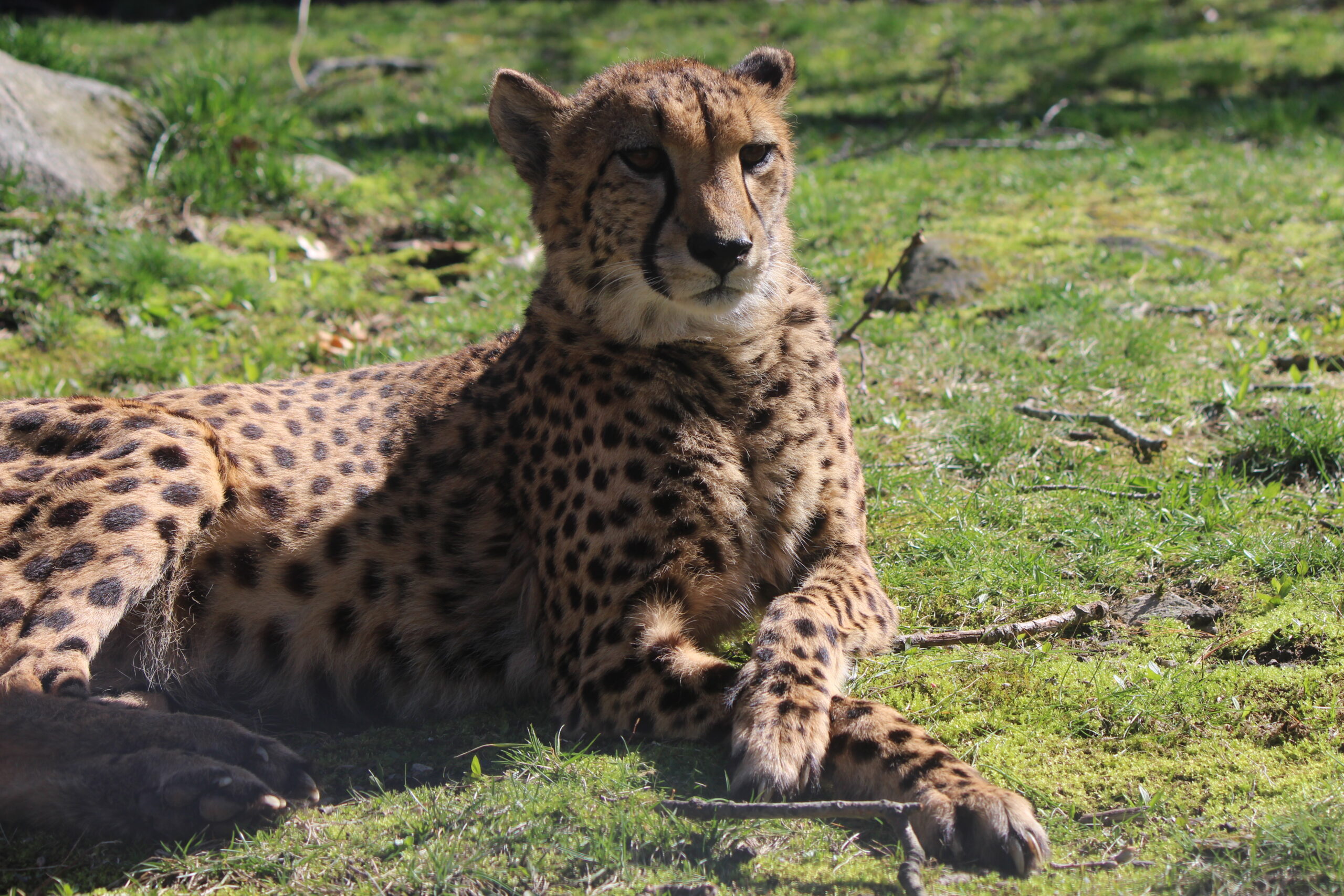
Cheetah
Acinonyx jubatusClass: Mammalia Order: Carnivora Family: Felidae
Size
Weight: 84-140 lbs
Length: 5-7.5 ft
Diet
Cheetahs hunt small to medium sized prey including gazelles, impala, birds, and rodents.
Lifespan
Lifespan (Wild): 22 years
Lifespan (Captivity): 25+ years
Habitat & Range
African Savannah
Interesting Facts
- Cheetahs are the fastest land animals. They can go from 0 to 60 miles per hour in just 3 seconds. However, they cannot maintain top speed for more than 400-600 yards without overheating.
- The genus name acinonyx means “no-move-claw” in Greek. Cheetahs have claws that cannot be retracted completely. Unlike big cats such as lions and tiger, cheetahs cannot roar. They can, however, purr.
- Cheetahs are built for speed. Their large nostrils allow for an increased oxygen intake, and they also have large, strong hearts and lungs. Their tail acts as a rudder to help them balance and change direction while pursuing prey
- Cheetah cubs have a bushy mane of fur, known as a mantle, running from their neck to their tail for the first few weeks of life. This mantle provides camouflage in tall grass. It is believed it may also act as a mimicry defense to make the cub look like a honey badger, which is well known for their aggressive disposition, to discourage predators.
Conservation Status
Vulnerable
Threats
Cheetahs face a number of threats in the wild. For example, they are at risk due to loss and fragmentation of their natural habitat. Loss of habitat leads to reduced prey available for this species. Farmers sometimes trap and shoot cheetahs because they perceive these cats as threats to livestock despite cheetahs rarely hunting domestic animals.
